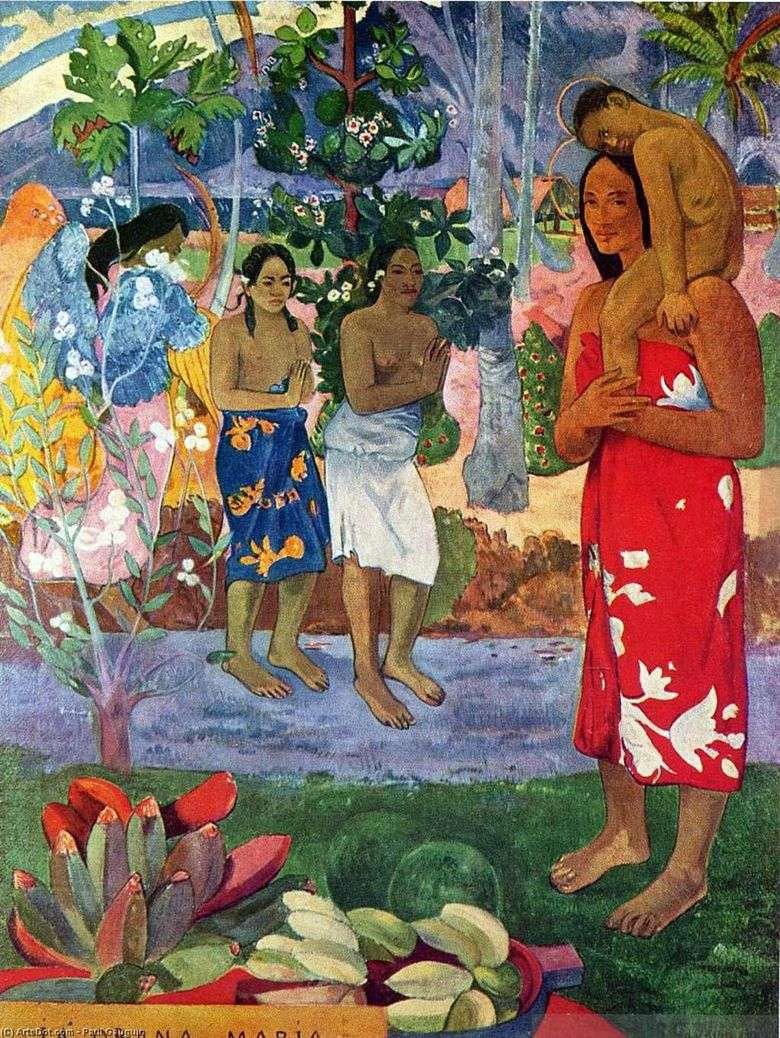
“Oran Maria”, “Ave, Maria”, “Ia Oran Maria” – the names of the same canvas, which are translated as follows: we greet you Mary.
The picture is remarkable in that it is an unusual embodiment of a religious plot – a kind of conglomeration of Tahitian culture and Christian traditions.
The composition of the picture combines many unexpected elements: in the image of the Virgin Mary the Tahitian appears before the viewer, while she is written in a realistic Gauguin style, only the halo points to her holy destiny. As usual, the Virgin Mary is depicted with a child in her arms, only on this canvas the painter sits the boy around his neck to his mother.
The angel in the foliage of the tree indicates the Annunciation, whereas the central figures are a kind of interpretation of the scene of the worship of the Magi.
I must say that Gauguin was not a zealous Catholic, and he was especially interested in Tahitian myths and religious customs, devoting a lot of paintings to them. In the same picture, he decided to unify the seemingly polar hypostasis, embodying the famous religious leitmotifs through the culture and exotic beauty of the islanders. The picture was very shocking and interesting.
The background of the painting, as well as the forest landscape, resembles the work of Botticelli, especially the well-known plot “Spring”. This similarity is not accidental – on the wall of the Gaugin hut a reproduction of this painting was actually pinned. The central figures were also borrowed – this is a quote from the frieze of the Javanese temple in Borobudur, photographs of which also adorned the master’s dwelling.
The painter had a clear idea of what an outrageous reaction the picture can bring to the public, especially the religious part of it. But the free master living on an exotic island, this issue did not bother at all – he was free from all traditions and opinions of others, creating a completely new art.
 We greet you, Maria by Paul Gauguin
We greet you, Maria by Paul Gauguin Oran Maria (Te damos la bienvenida, Maria) – Paul Gauguin
Oran Maria (Te damos la bienvenida, Maria) – Paul Gauguin Siesta by Paul Gauguin
Siesta by Paul Gauguin La Orana Maria by Paul Gauguin
La Orana Maria by Paul Gauguin A Wonderful Spring (Sweet Dreams) by Paul Gauguin
A Wonderful Spring (Sweet Dreams) by Paul Gauguin Child (Christmas) by Paul Gauguin
Child (Christmas) by Paul Gauguin Woman holding the fruit by Paul Gauguin
Woman holding the fruit by Paul Gauguin What’s new? (Two Tahitians) by Paul Gauguin
What’s new? (Two Tahitians) by Paul Gauguin